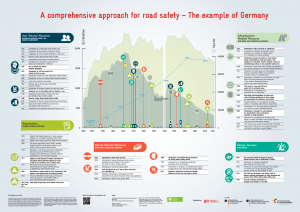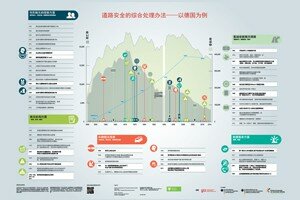About 3,400 people die every day in road traffic accidents around the world. A further 50 million people are injured every year. Despite comparatively low levels of individual motorisation, emerging economies and developing countries in Africa, the Middle East and Asia are particularly affected, with more than 90 per cent of traffic-related deaths occurring in these countries. If current trends continue, road accidents will overtake HIV/AIDS and tuberculosis to become the world’s third most significant health hazard by 2030.
China’s rapid economic development and advancing motorisation comes at a big price with regard to road safety. Reports show that around 200,000 people die yearly in result of traffic accidents and even more are being injured overall in the country. Along with its economic development and increasing motorisation, as the core cause of the road accidents, the country’s legal and regulatory framework, poor enforcement, lack of public awareness about road safety issues, poor training for drivers and low infrastructure safety standards worsen the country’s traffic situation.
By launching the Decade of Action for Road Safety 2011-2020, the United Nations has called on the member states to step up their efforts to improve road safety. This infographic illustrates the comprehensive approach that Germany has taken as a response to sharply rising fatality rates since the 1950s. Along with many other European countries, Germany has succeeded in reducing fatalities significantly – thanks to a bundle of measures that can be replicated elsewhere.
Road Safety Infographic_EN
Road Safety Infographic_CN




